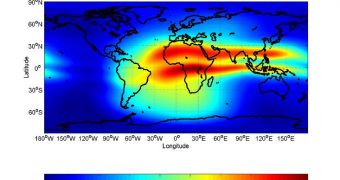While it may be true that the Sun is a giant unshielded fusion reactor, and that it can manifest itself violently, experts at the European Space Agency (ESA) say that the recent craze about the star's increased activity jeopardizing Earth is unfounded.
ESA is taking a keen interest in the issue because it is scheduled to launch a new series of satellites by 2013, when the current solar cycle is bound to reach its maximum.
For the past couple of years, the Sun has missed its cue, in the sense that it failed to recover from a period of solar minimum. This was supposed to conclude in 2008 but it's only now that solar activity is beginning to increase in intensity.
Studying how the Sun behaves is very important, given that solar storms can emit waves of radiation that can disrupt power grids, satellites communications, and threaten the astronauts aboard the International Space Station (ISS).
Satellite-based navigation systems are also prone to experiencing interferences from solar storm, and ESA is scheduled to launch the first components of such a system within a couple of years.
The first four operational satellites of the Galileo navigation system will be launched by 2013, setting the stage for the main competitor of the American-built Global Positioning System (GPS).
“These Galileo In-Orbit Validation (IOV) satellites will indeed go up during a period of enhanced solar activity. But the solar max is hardly a surprise event,” says Bertram Arbesser-Rastburg.
“Astronomers counting sunspots have tracked the solar cycle for more than 250 years. All the indications are this solar max will not be especially energetic – the last solar minimum has been unusually long and deep,” adds the expert who is the head of the Electromagnetics and Space Environment division at ESA.
Recently, a series of media reports have been making the rounds, suggesting that the increased solar activity that is expected for 2013 could have devastating consequences on the Earth.
There is a special group of scientists, called solar physicists, who spend their times peering through data sent back by telescopes trained on the Sun, looking for indications that something severe may take place.
It is highly unlikely that the Sun will affect life on Earth to a considerable extent during the coming solar maximum. ESA officials are also convinced that nothing bad will happen to their satellites.
“In the worst case – perhaps during a geomagnetic storm, when an incoming coronal mass ejection completely churns up the ionosphere – the system might tell the user not to rely on it at all,” ESA experts say in a press release.
“But that would not be a total shutdown, just local unavailability on a scale of hundreds of kilometers, like getting caught up in an incident of bad weather – except this would be space weather,” they conclude.

 14 DAY TRIAL //
14 DAY TRIAL //